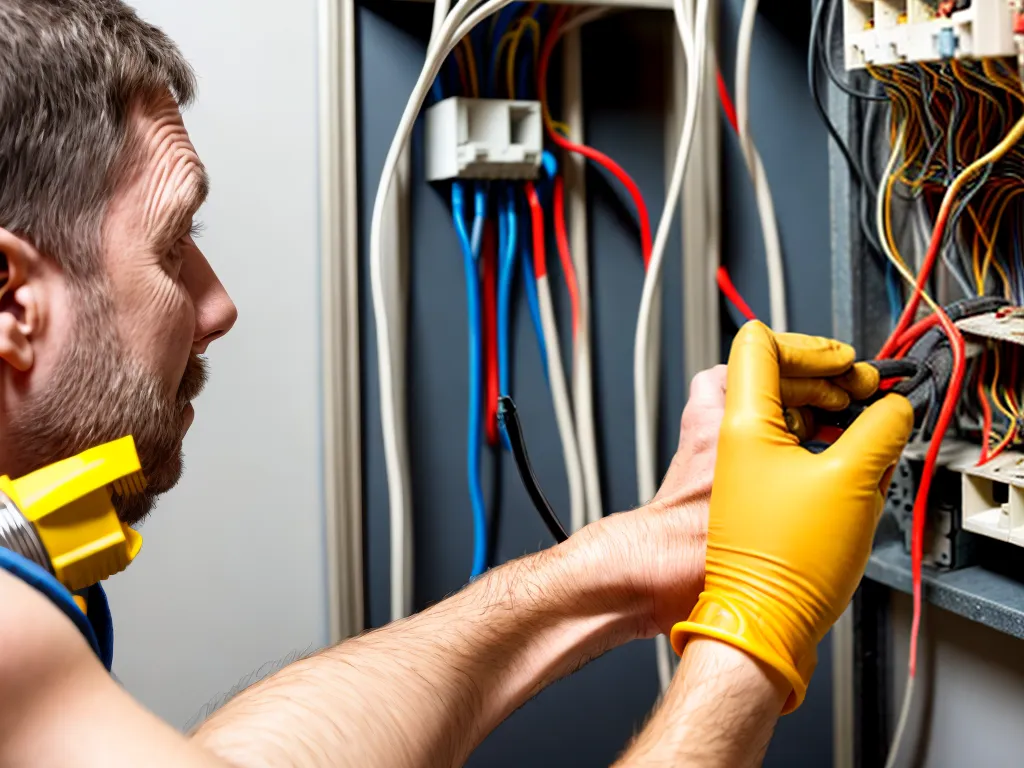
How to Safely Replace Electrical Wiring in Your Home
Replacing the electrical wiring in your home can seem like a daunting task, but with proper planning and by following safety precautions, it can be done safely. Here is a step-by-step guide on how to safely replace electrical wiring in your home:
Gather Necessary Materials and Tools
Before starting any electrical project, it's important to have the right materials and tools on hand. For wiring replacement, you will need:
- Wire strippers - for removing insulation from wires
- Voltage tester - to check if circuits are live before working on them
- Cable ripper - for removing old cables from the walls
- Fish tape - for pulling new wires through walls
- Cable staples and hangers - for securing new wiring
- Wire nuts - for connecting wires
- Electrical tape - for insulating wire connections
- Conduit and fittings - if using conduit for new wiring
- Circuit breakers - for the electrical panel, matched to wire gauge
- ** Romex NM-B wiring** - typically 12 or 14 gauge for 15 & 20 amp circuits
It's also a good idea to havebasic hand tools like a hammer, screwdriver set, pliers, and a flashlight. Ensure you have all necessary materials before starting.
Turn Off Power and Inspect Electrical Panel
Before touching any wiring, the power must be turned off at the main electrical panel. Use a non-contact voltage tester to double check wires are de-energized. The electrical panel should also be inspected to check available space for new circuit breakers. All open spaces should be filled to prevent gaps in the sequence.
Remove Old Wiring
With the power off, the old wiring can be removed. Typically wiring is stapled to support studs and joists. Use a cable ripper to cleanly remove staples and pull out the old cables. Remove wires from their terminals and pull them out completely.
Inspect the condition of the wiring as it's removed. Brittle or cracked insulation indicates a fire hazard and the need for full replacement. Removing all old wiring provides an opportunity to start fresh.
Plan New Circuits and Layout
Carefully plan the layout of new wiring. Consider which rooms require additional outlets, light switches, or dedicated appliance circuits. Map out locations in each room and trace wire runs through walls and ceilings back to the electrical panel.
Leave extra length for wire slack and make runs as direct as possible. Avoid excessive splicing which can become failure points. Group wires with similar end points into cables for easier pulls.
Pull New Wires
Use fish tape to route new cables through walls and ceilings between outlets and the electrical panel. Maintain proper wire polarity throughout, keeping hot, neutral, and ground connections intact. Staple cables at regular intervals according to local building codes.
Leave 12-18 inches of extra wire at outlets for easy connection. Also leave extra wire at the panel for circuit breaker connections. Carefully pull only a few cables at a time to avoid tangling.
Connect Wires and Install Boxes
With cables pulled, wires can now be connected. Strip insulation properly without nicking copper and twist strands together tightly. Use wire nuts or crimp connectors for secure joints, covering with electrical tape.
Install outlet and switch boxes if necessary. Anchor securely to studs. Feed wires into boxes, leaving 6 inches for device connections. Terminate grounds to boxes using provided screw terminals and clamps.
Connect Devices and Panel Breakers
Devices like receptacles, switches, and light fixtures can now be wired up. Use the device screws to connect hot, neutral, and ground wires. Follow diagrams on the device. Ensure ground connections are done first and wires are neatly positioned.
At the main panel, connect wire ends to new circuit breakers rated for the wire gauge. With all connections complete, the panel can be closed up and devices remounted.
Restore Power and Test Circuitry
With new wiring installed and connected, power can be restored to the electrical panel. Flip breakers on one at a time and test each circuit using a voltage tester. Confirm proper device operation and wiring polarity.
Inspect all connections for heat or sparks indicating loose joints. Once operation is verified, install switch and outlet cover plates. A licensed electrician should inspect the work before the system is put into full use. Proper wiring installation and maintenance ensures electrical safety.